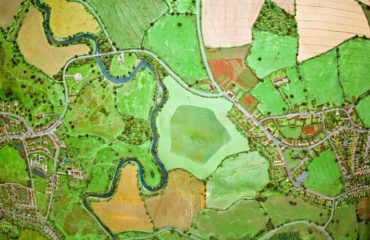Setting the bar for a Green Brexit in food and farming

This blog post is a summary of Setting the Bar for a Green Brexit in Food and Farming, a report by the authors commissioned by the Soil Association (a short summary is also available). The report was launched at a meeting of the All Party Parliamentary Group on Agroecology, which Brexit & Environment live tweeted.
As the UK prepares to leave the European Union (EU), the future of agriculture is high on the political agenda. Since the EU Referendum result, the UK Government has repeatedly promised a ‘Green Brexit’, whereby the UK would learn from the mistakes of the CAP and replace it with policies putting the ‘environment first’.
But what would this mean in practice, and are current developments going in the right direction? In a new report, commissioned by the Soil Association, we aim to set the bar for a Green Brexit in food and farming based on new research and case studies of innovative agricultural policies and practices across Europe.
The shadow of the Common Agricultural Policy
Since joining the EU, UK agriculture has been strongly influenced by the Common Agricultural Policy (CAP), leading to strong Europeanisation of agricultural policy in the UK.
For over twenty years, the CAP has also been interpreted and implemented differently across the UK’s four nations, which differ in the levels of financial support and the importance of agri-environment-climate payments.
Even after Brexit, the CAP will continue to impact farming in the UK due to the close competition between the two markets.
Political commitments to policy change in the UK
During the referendum campaign, the Vote Leave campaign presented Brexit as a ‘once-in-a-lifetime’ opportunity to ‘take back control of the regulation of agriculture’, reduce regulatory burdens and continue to financially support farmers.
Since June 2016, ministers at UK level have made a number of promises related to food and farming. Three of these commitments are central: to ‘take back control’, to deliver a ‘Green Brexit’ that improves the environment through the provision of ‘public monies for public goods’ and to ensure that international trade negotiations do not lead to a weakening of environmental standards (which will depend both on the future trade relationship with the EU and new free trade agreements with e.g. the United States).
However, these commitments are made in the context of devolution, and the post-Brexit agricultural policies in England, Scotland, Wales and Northern Ireland already show signs of divergence. Leaving the EU and the CAP means abandoning a shared framework of agricultural, environmental and trade policies.
While more diversity can be desirable to a certain extent, common frameworks are necessary to avoid a race to the bottom and to foster a race to the top in environmental, food and farming standards.
Learning from innovative policies and practices within the EU
While the CAP has historically been linked to a deterioration in soil, air and water quality, habitat clearance, loss of biodiversity and the degradation of ecosystems, recent CAP reforms have attempted to ‘green’ agriculture. These reforms have made it possible for EU Member States to pursue ambitious, differentiated yet complementary policies for farming and food, alongside the CAP – belying the policy’s one size fits all image.
The report reviews five examples of innovative domestic policies in Spain (fair trading practices in the food supply chain), Italy (social agriculture), France (agroecology and agroforestry) and Denmark (organic food), and how the UK could adopt and adapt policies in each issue area.
Pathways to deliver a Green Brexit in food and farming
Taken together, our research leads us to draw five key take-home messages:
1. Re-thinking agriculture is not just about agricultural policy. It requires changes to training, land-use rights, education, trade arrangements, consumption patterns and the entire supply chain (acknowledging that primary producers are often the weakest link in that chain).
2. Long-term targets are needed. These targets should be based on cross-party and cross-sector consensus on a shared farming future – together with short- and medium-term evaluation to make it possible to hold decision-makers to account. Such long-term targets would create much-needed clarity and stability for all parts of the food supply chain to guide their investments.
3. Change takes time and requires collaboration. Cooperation and collaboration between farmers, and between farmers and other stakeholders is key to deliver a sustainable farming future. Collaboration is also needed to help farmers and the broader food system withstand shocks (both financial and climatic) and build resilience.
4. A shared policy framework can accommodate and benefit from local divergence and innovation. Our examples of innovative policies and practices happened in countries working within and alongside the constraints of the CAP.
5. Holistic, complementary and forward-looking approaches to food and farming are crucial to deliver a sustainable farming future where food and farming are co-designed.
About the authors
Dr Ludivine Petetin is a Lecturer in the School of Law and Politics, Cardiff University and a Brexit & Environment Associate specializing in agricultural law, trade and Welsh policy. Dr Viviane Gravey is a Lecturer in European Politics at Queen’s University Belfast and Co-chair of the Brexit & Environment network. Dr Brendan Moore is a Senior Research Associate at the University of East Anglia and the Brexit & Environment network coordinator.




